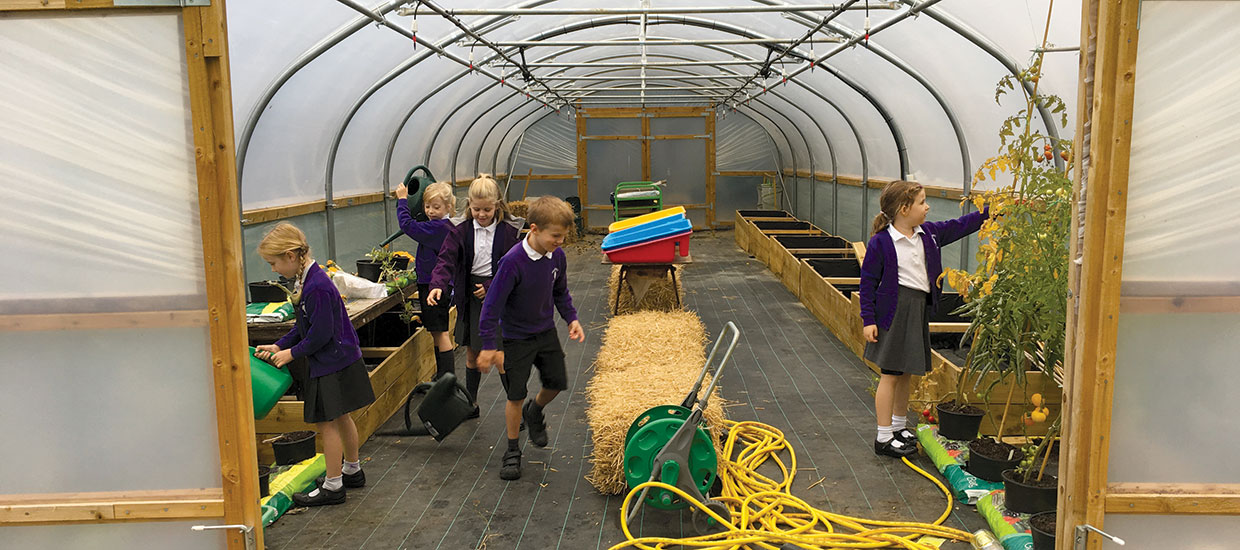One grant leads to another
When applying for grants, it pays to have a demonstrable plan of action – and it’s even better if you’ve already acted on that plan. Sarah Everson explains how things snowballed at one Sussex school

Our school – Halsford Park Primary in East Grinstead, West Sussex – is blessed with a large amount of outdoor space: an extensive playing field, wooded areas, gardens and a pond. The gardens have always been looked after by school staff and a small group of volunteers, but in recent years the pond and wooded areas had been left untended and under-utilised.
In 2016, parents and supporters of the school got together to start the task of improving the school grounds by clearing overgrown patches, picking fruit from trees, gardening, and tackling the pond area. This was in tandem with an ‘Eco Warriors’ after-school club, run jointly by a teacher and a parent who are both passionate about the natural environment.
Through these two initiatives, the Growing Together project was born. The idea of the project is to place greater emphasis on open-air teaching, and to involve children, parents, teachers and the wider community in making the best use of the school’s outdoor area.
In order to document progress and engage potential volunteers and supporters, we set up a Facebook page. This proved invaluable when, in 2017, the project leaders decided to apply for a £10,000 community grant from the OneFamily Foundation, run by the OneFamily finance group. The grant was to cover the installation of a giant polytunnel, and to fund equipment and resources so that teachers could utilise the polytunnel for lesson activities with their classes.
Having a record of ongoing activity on Facebook meant that we could demonstrate to the grant funder that the project already had momentum and that there was a genuine need for the funding. When the grant was approved (in principle) by OneFamily, we were able to use the Facebook page to drum up support for the public vote we needed to ensure the bid was successful. (The system has since changed to a computerised draw.)
We started September 2017 with £10,000 and a new headteacher who was passionate about Growing Together. Working parties of parents helped clear the ground for the polytunnel, and we were able to use a little of our funding to pay for professional help in preparing the grounds. The polytunnel was built and fitted with an irrigation system and raised beds the following spring.
Things didn’t stop there however. A couple of the teachers had been trained in delivering Forest School lessons, so plans were put in place for improving other spaces for outdoor learning, particularly the wooded and pond areas. Gardening parties of parents, teachers and supervised children were held during the holidays to cut back undergrowth, take down trees and prepare den building and fire-lighting areas.
In the second half of 2018, we discovered the added benefits of having an ongoing project with widespread local support. We ran a campaign on Ralloo (a micro sponsorship platform) to win a planter for one of the garden areas. The whole school community rallied round, and by clicking, sharing, subscribing and viewing promotional videos, we gained enough points on Ralloo to get the planter within ten days!
We also submitted a grant application to the Aviva Community Fund, requesting £10,000 for phase two of Growing Together. This was to cover further clearing and improvement of the garden areas, the purchase of Forest School equipment and resources, and additional teacher training in outdoor learning. Parents, friends of the school, and even our local MP supported the project by voting for it online. We received more than 6,000 votes, taking the project to third place in Aviva’s Skills for Life category. Having such an engaged supporter base made our application very persuasive and we were awarded the full £10,000. And the momentum has continued. Late last year the Nineveh Charitable Trust granted Growing Together £4,000 for additional resources and equipment.
Our experience is that grant funders like to see that a project has ongoing support and that money
is being raised in a variety of ways. Being able to show that effort and investment (monetary or otherwise) has already been put into a project is important. So too is the ability to demonstrate a genuine need and valuable outcomes. Finally, having local support is key, especially if the funder uses a public vote to assist them in their decision-making.
Find out more
- The OneFamily Foundation has community grants that provide funding of up to £5,000 to local groups, charities and causes. OneFamily customers can nominate projects or groups for entry in a computerised draw. For more information, visit onefamily.com/your-foundation/community-grants/
- The Aviva Community Fund is open to everyone. Enter a project, explaining what a difference the funding could make. Projects with the most votes go forward to the finals, where a judging panel awards the funds. Go to avivacommunityfund.co.uk/
- The Nineveh Charitable Trust provides grants for projects and activities that promote a better understanding of the countryside to the general public. Applications can be made at any time and are discussed at the trustees’ quarterly meetings. For more information, visit ninevehtrust.org.uk/how-to-apply/
